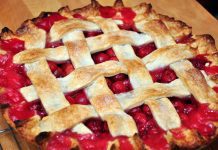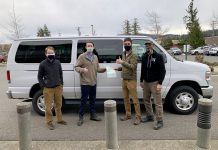College town. County seat. Natural wonderland. These are just a few descriptors that set Bellingham’s identity apart. Named for its bay, which George Vancouver dubbed after Sir William Bellingham in 1792, it’s the largest “Bellingham” in the country — before Massachusetts and Minnesota namesakes.
Bellingham’s culture regularly inspires artists such as Bradley Lockhart of Lariat Creative and Northwest Corner Goods. Lockhart designed Bellingham’s official flag in 2015 in response to a national movement.
“Roman Mars did a TED Talk in 2015 that got millions of views,” says Lockhart. “And it inspired different cities around the country to redesign their flags or to design new ones. Since then, there have been 320 new or redesigned city flags, but Bellingham was honestly on the very first wave of that.”
Many other nicknames and symbols characterize this city that over 90,000 people call home.
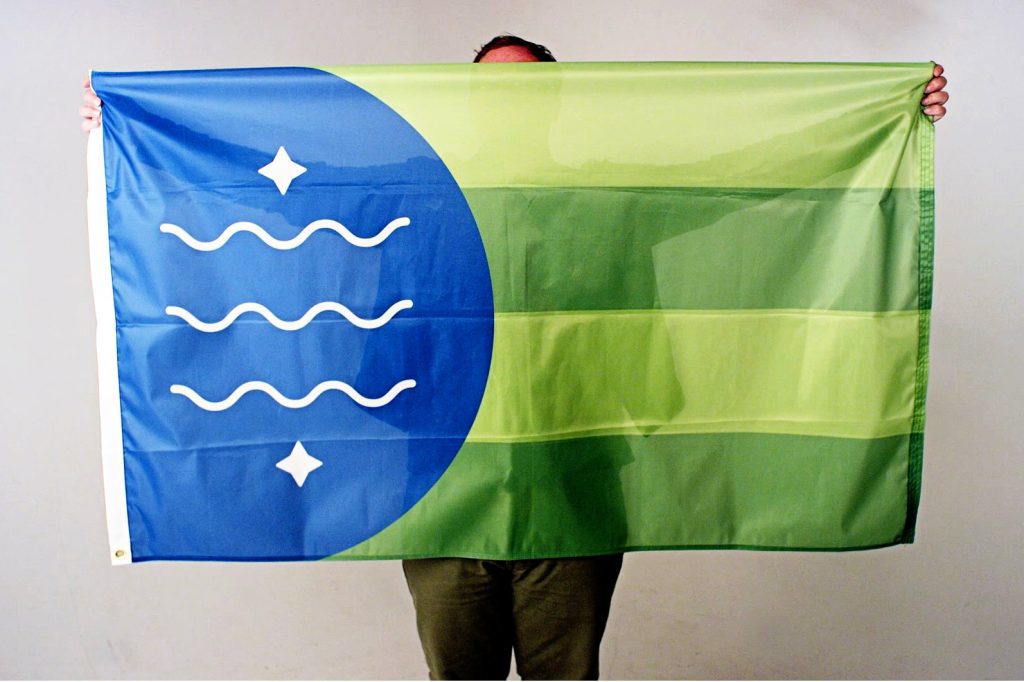
Nicknames
Lelah Jackson Edson’s 1951 history text The Fourth Corner originated one of Bellingham’s lasting nicknames. Ross Kraig from the Bellingham Public Library recommended the title — designating Bellingham the final “corner” settled in the contiguous United States.
The name now features in The Fourth Corner News, Fourth Corner Nurseries, Fourth Corner Neurological Associates, WEA Fourth Corner, Fourth Corner Elites Car Club, and T.A. Warger’s Murder in the Fourth Corner true crime books.
Bellingham’s “City of Subdued Excitement” nickname derives from Stephen Stimson’s 1995 mural at 109 Prospect Street. Stimson owned the building next to Whatcom Museum as Lone Wolf Antiques and painted the mural to welcome visitors. Today, the unofficial slogan reflects Bellingham’s reputation as a hidden gem of Northwest culture.
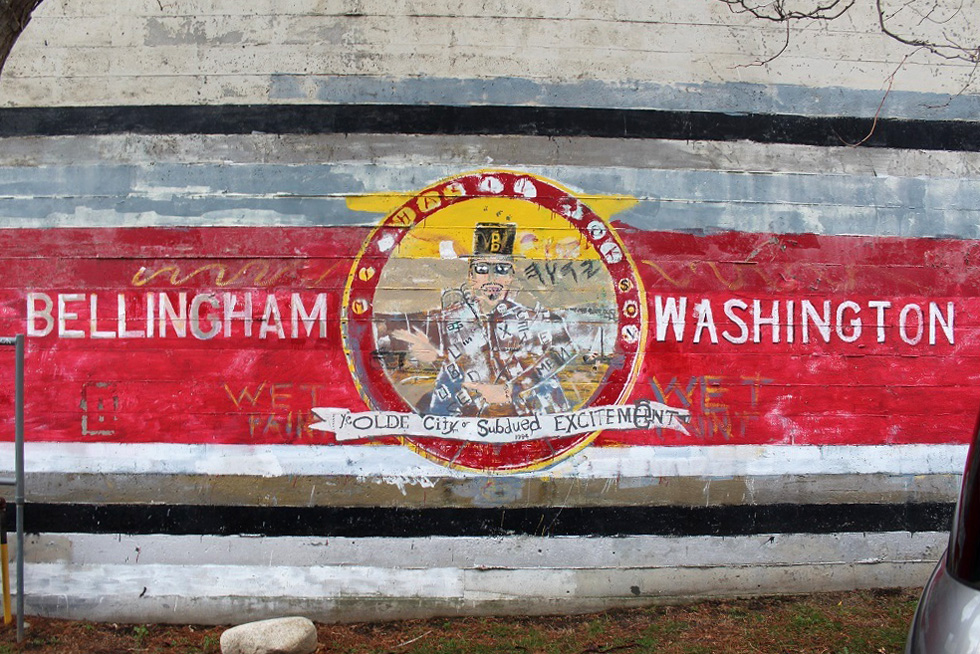
“Our art scene, our music scene, have always been pretty incredible for the size of city that we are,” Lockhart says. “Some artists I know here are kind of world-famous. And if they just decide to live here, they could live in New York or L.A., but they’ve carved out a pretty good life for themselves out here.”
The Bellingham Herald estimates that “Bellinghamster” has been a contentious nickname for locals since the 1980s. Some find it endearing, while others prefer “Bellinghamer” or “Bellinghamite.” An Urban Dictionary entry from 2005 deadpans, “Life is Bellingham is much like life on a hamster wheel — you’re moving, but you’re not going anywhere.” The Bellingham Bells have embraced the city’s fluffier side with hamster mascot Dinger.
Bellingham is also commonly called “the ’Ham” or “Bham” — sharing the latter with Birmingham, Alabama. Another old slogan, “Sea to Ski in Sixty Minutes,” inspired the Ski to Sea Race’s name in the 1966 letter that first proposed the event. Other neologisms more narrowly describe local culture, as in “Brewingham,” for the craft brewery scene.
Symbols
A ubiquitous symbol within less than a decade, the Bellingham flag represents the original towns — Bellingham, Whatcom, Sehome, and Fairhaven — with four green stripes. Its blue semicircle represents Bellingham Bay, with two stars for the Lummi and Nooksack tribes and waves for the word origin of “Whatcom” (or “noisy water”).
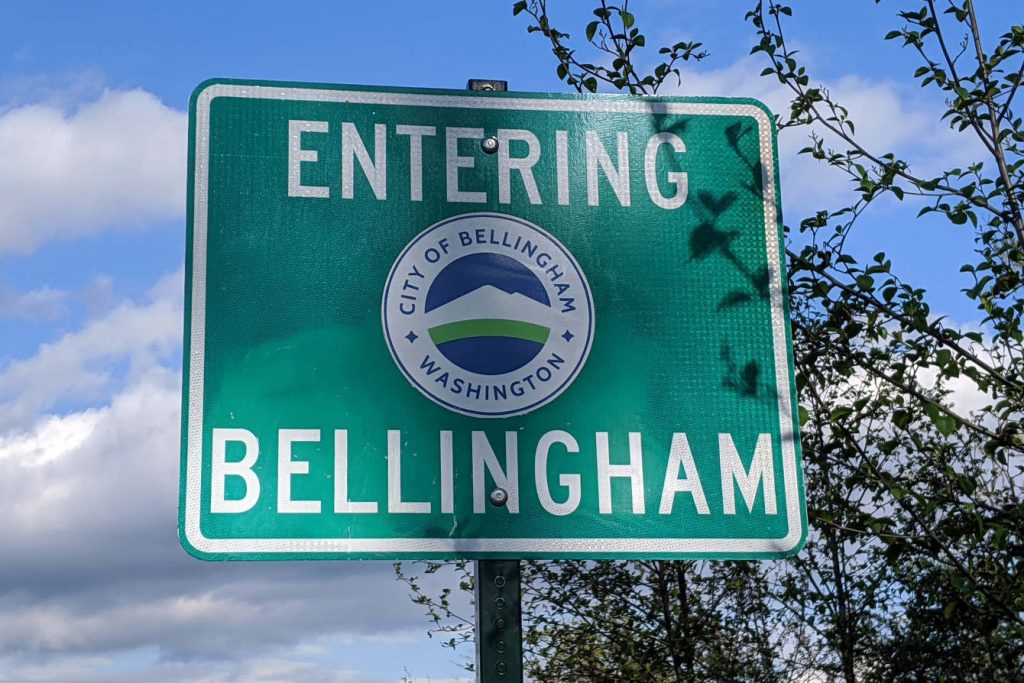
“I talk at schools, [and] I talk to a kid who’s like seven years old and they’re, like, ‘I know the Bellingham flag; I’ve known the Bellingham flag my whole life,’” says Lockhart. “I’m, like, ‘Wow, you actually have, because it’s been around as long as you’ve been alive.’ So, for certain people, it feels like it’s always been there. But for people like me or older, it does still feel kind of new.”
Lockhart used the same colors in 2016 for the Bellingham city seal, which depicts Mount Baker and Bellingham Bay.
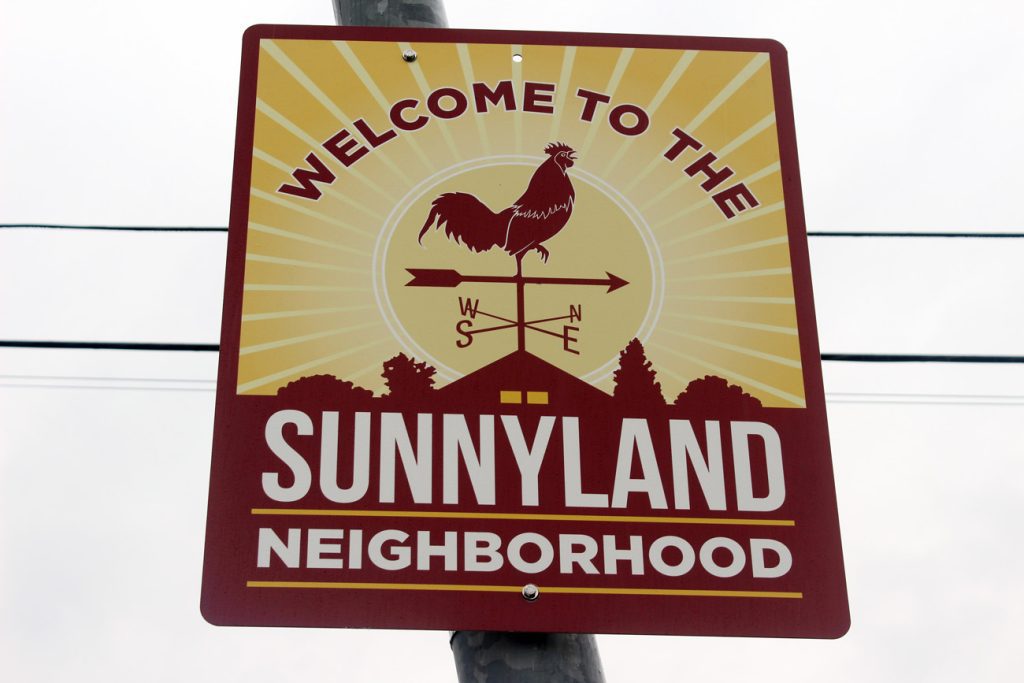
Bellingham neighborhoods have also commissioned welcome signs. “That’s like a microcosm of branding: neighborhood, city, county, state, country, world,” says Lockhart, who designed the Roosevelt neighborhood’s sign in 2019.
“The chicken has become a symbol of Sunnyland because they had chicken races at the Sunnyland Stomp,” says Lockhart. “And then the Homeskillet chicken, Velveeta Jones, she’s in Sunnyland — so that’s another reinforced chicken symbol.”
Landmarks
As locally themed design firms show, Bellingham landmarks have also become iconic. These include built environments such as the Bellingham Herald sign, the Lions Club “Welcome to Bellingham” sign, Old City Hall, and the waterfront “acid ball.” Popular scenery includes Mount Baker, Whatcom Falls Park, Boulevard Park, Lummi Island, and Lake Whatcom.
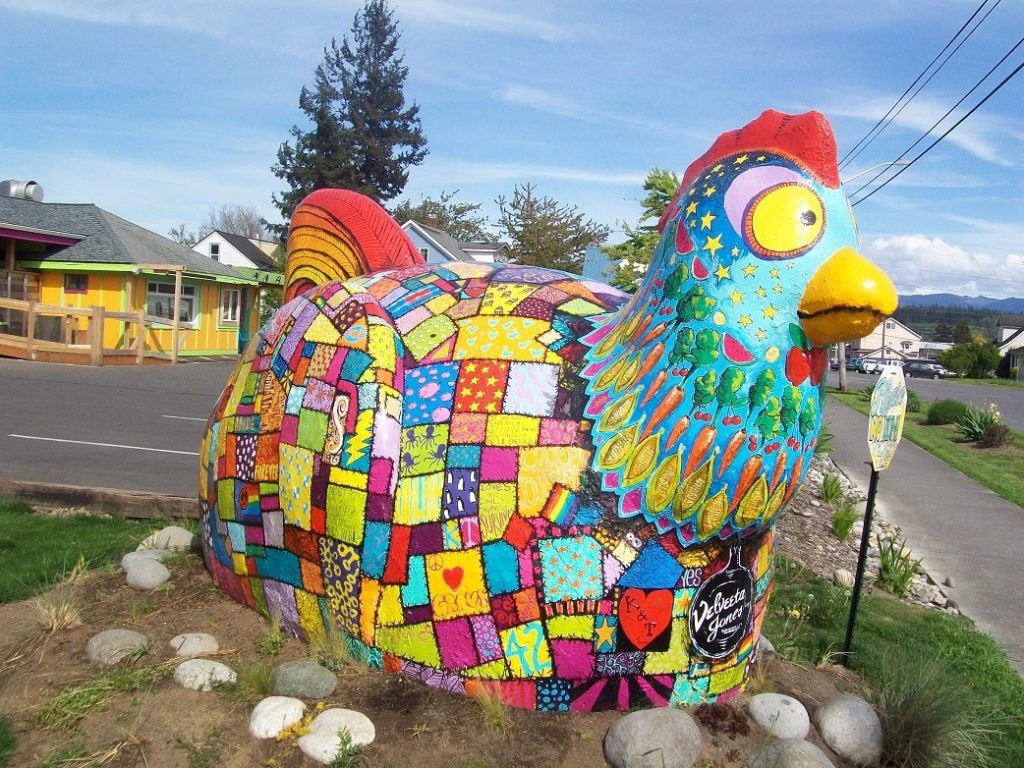
“Our geographical location is obviously unique in that we are right on the edge of water and mountains, so that attracts a lot of people,” says Lockhart. “We’re a college town, so we always feel kind of young; a huge percentage of our population is under 25. So that’s kind of cool because we’re always getting new blood pumped in here, like hopeful, starry-eyed people.”
Beyond civic pride, Lockhart says, symbols of local identity inspire responsibility to one’s neighbors, community, and environment.
“It’s almost like a symbol of: You care about this place,” says Lockhart. “And this place isn’t an abstract idea like freedom or liberty — it’s literally a place where you live. So, you’ve got to clean it up, you’ve got to be good to it, and you’ve got to do what you can to invest back into it.”







